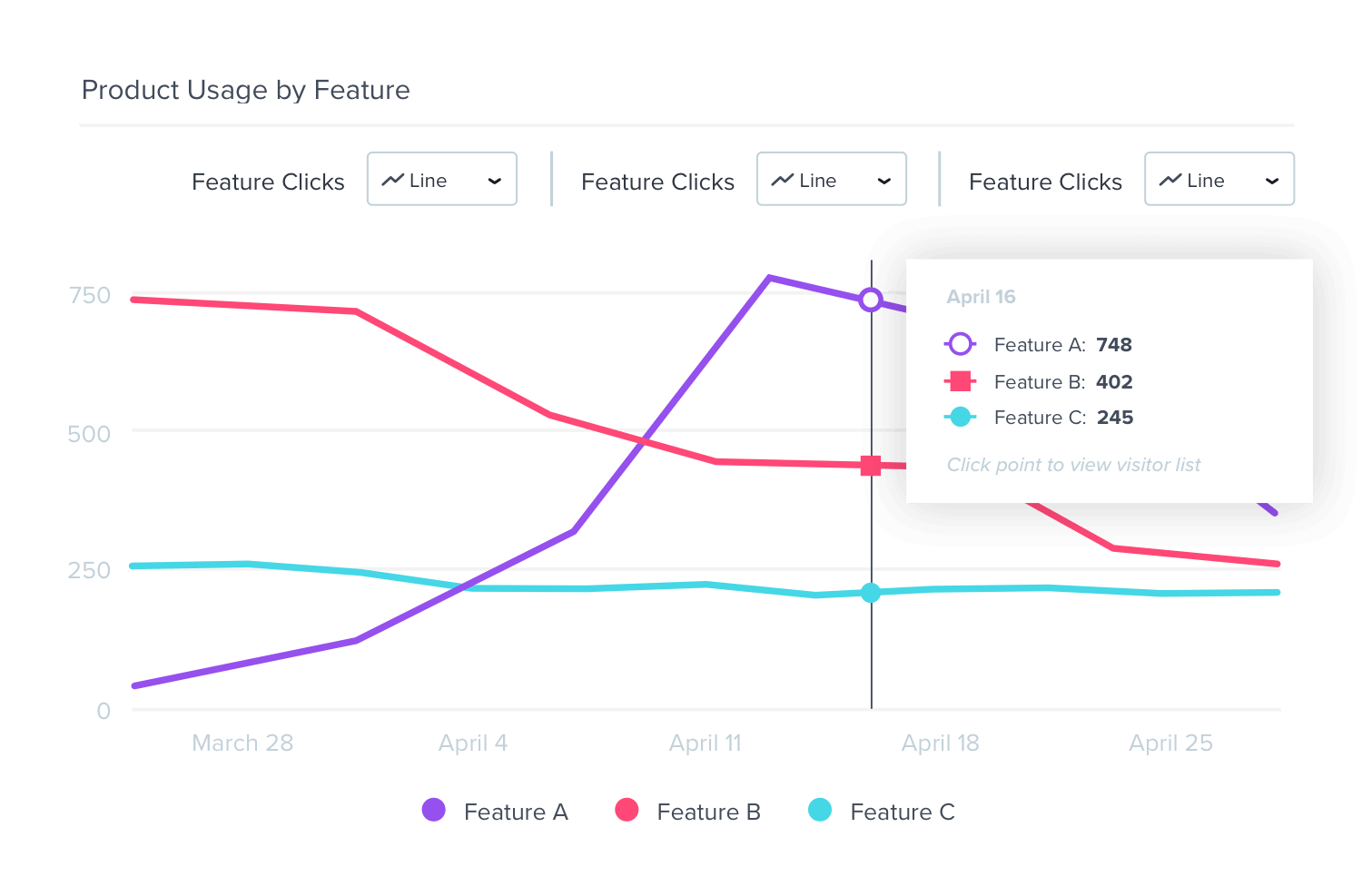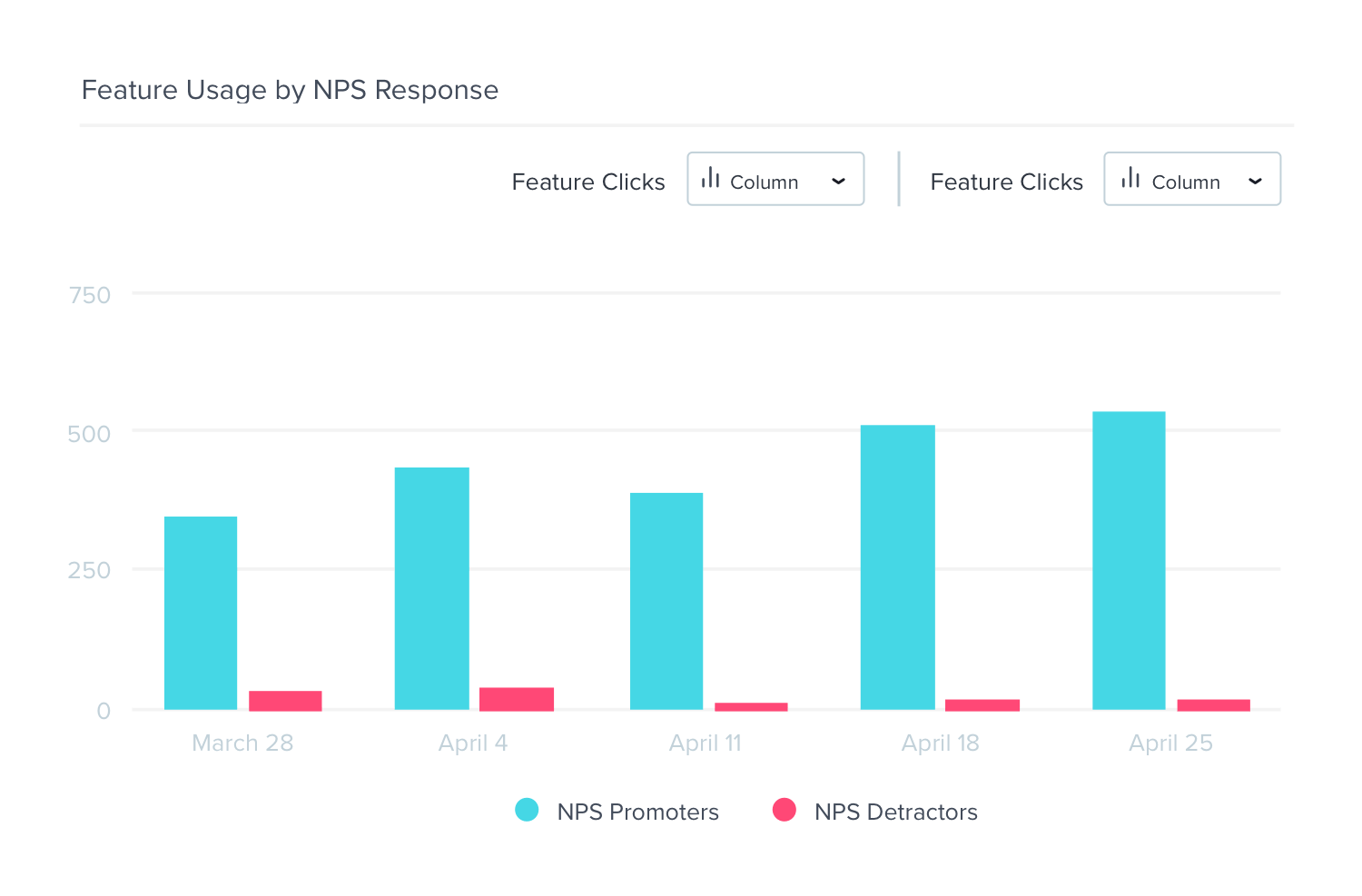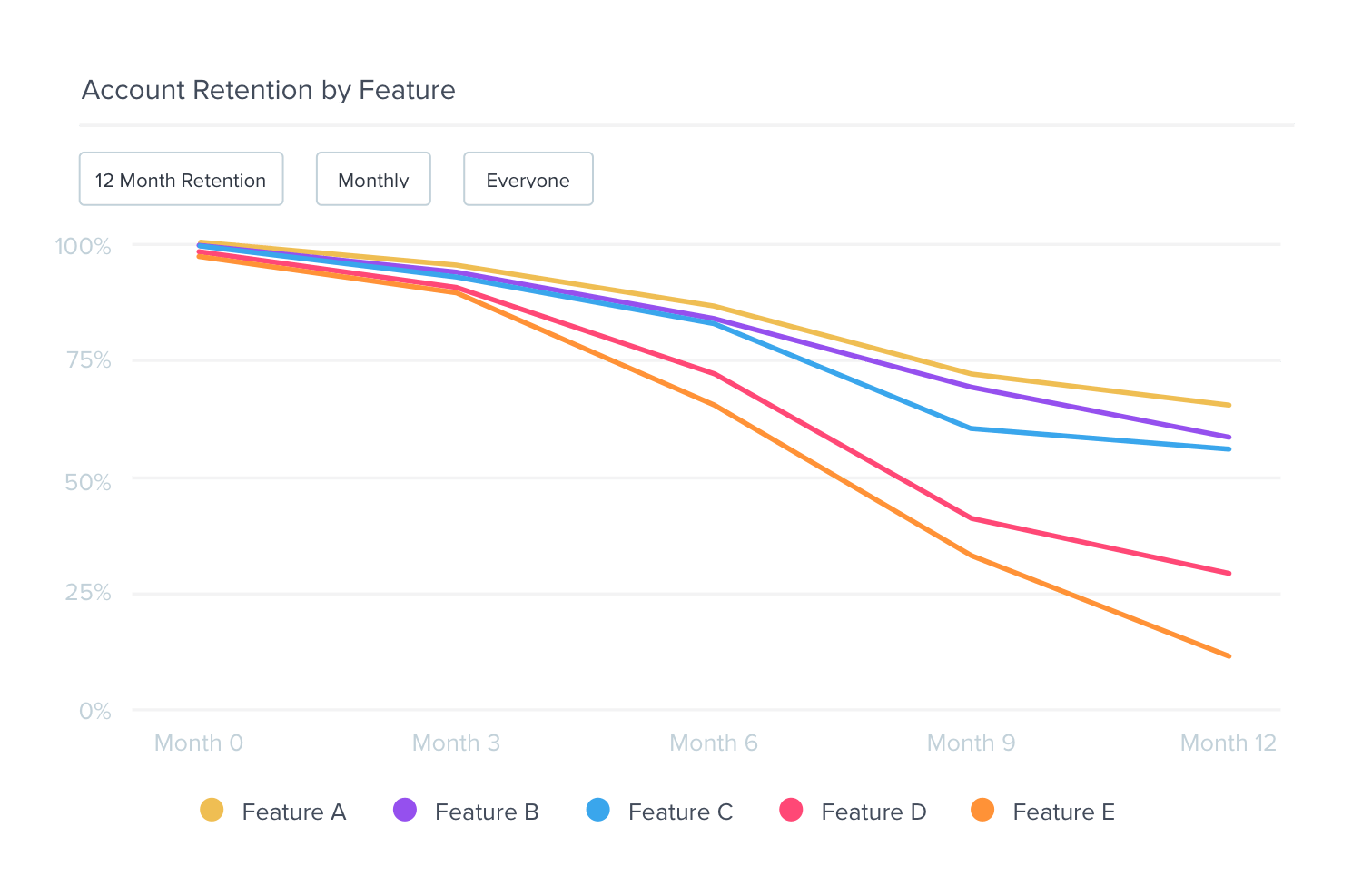Once you’ve decided to leverage your product to deliver onboarding, the first challenge is determining which features you’re going to highlight during the in-app onboarding experience. Remember: Onboarding is a critical time in the customer journey for users to both become proficient in and find value on your product. It’s not just about guiding users through your app’s five or ten main features–it’s about guiding them through the right ones.
Choosing what to expose new users to first means thinking about which areas of your product are critical to understanding how the product works and how to use it successfully right off the bat. First and foremost, this requires access to product data. Without an understanding of which user behaviors lead to positive customer outcomes (e.g. healthy product engagement, retention, and expansion), you have no way of knowing what your onboarding experience should showcase. Why guess which features are the most impactful when you can let the data speak for itself?
When you deliver onboarding in-app and use data as the foundation, you’re able to provide contextual information to new users as they navigate the product, and help them utilize the functionality that’s most relevant to their specific use case. Gone are the days of dropping new users into the product and hoping they find success on their own.
In this guide, we walk through the steps you should take to identify the right features to highlight in your in-app onboarding flow. Creating optimized in-app onboarding requires ongoing experimentation and iteration, though, so think of this as your starting point.
Step 1: Identify your goals
While you may be eager to get your in-app onboarding up and running, you should first identify what you’re looking to achieve with your onboarding flow.
This requires spending time thinking about your ideal users: who are they, and what are they trying to achieve in your application? Which areas of the product should they familiarize themselves with first? The goal (or goals) you choose will help inform your onboarding’s structure and content, and first and foremost the features you choose to highlight.
Here are some example goals to consider:
- Increase awareness and adoption of key features
- Increase conversion from freemium and/or product trial experiences
- Increase adoption of internal tools (for employee-facing products)
If your goal is to boost adoption rates of certain features, you’ll want to focus your onboarding efforts around these areas of your product. But, remember to consider which additional features or functionality new users should know about in order to be successful. If you’re looking to drive freemium or trial conversions, think about how you can guide new users to the point of realizing that the paid version of the product can provide the value they need.
From there, you’ll likely already have an idea of some features to include in your onboarding flow. Keep this list close–but be sure to validate it with data. Which brings us to Step 2.
Learn how to use in-app guides to build personalized onboarding by taking a self-guided tour of Pendo.
Take a tour ->Step 2: Use data to select an initial set of features
Once you’ve thought about your goals and users’ needs and have a general sense of what your in-app onboarding should look like, product data will help you narrow in on an initial set of features.
In addition to the workflows you know are necessary to be successful in the product, it’s helpful to understand which features users are leveraging the most. By knowing which features your existing users access most often, you’ll have a better sense of where you should steer users who are logging into the app for the first time.

There are different ways to determine your “most popular” features, but one common way is to see which features generate 80% of the click volume in your application. If you’re able to view data for individual features, it’s also useful to examine usage over time and by visitor and account. At this point, try to choose at least four features and no more than ten–in the next steps, you’ll narrow these down to the sweet spot of four to five steps for your onboarding walkthrough.
Step 3: Analyze data by sentiment and impact on retention
While it’s important to build an in-app onboarding experience based on which features your users access the most, it’s even more beneficial to choose features that are associated with your happiest users, and have a positive impact on retention.

Using the set of features you chose in Step 2, start by segmenting your product data by sentiment. If you don’t currently have any sentiment data (like NPS), you can skip this step. If you are able to segment data by NPS response, take a look and see if usage of these features varies based on users’ NPS scores. Comparing usage by Promoters to the list of your most popular features will help you validate which features will be best to include in your onboarding experience.

In the end, you want to lead new users to the features that correspond to value realization and, ultimately, long-term usage. So, once you’ve segmented your data by sentiment, examine these features’ impact on retention (if your product analytics capabilities allow you to do so). This way, you’ll be able to identify which features correlate with users returning to your app over time.
Step 4: Narrow down your choices
Given all of the data and insights you collected in earlier steps, now is the time to decide which features to include in your onboarding experience. As a reminder, we recommend choosing four to five key features–the last thing you want is for new users to feel overwhelmed when they log into your app for the first time. If you have more than five features that you think new users need to know about, consider splitting them up into an initial onboarding sequence and additional guides (e.g. tooltips) that you serve users throughout the next several weeks or months.
Step 5: Iterate over time
This step isn’t quite as clear-cut as the others, but it’s important to remember that onboarding isn’t static–you should be constantly measuring your in-app onboarding’s effectiveness, and tweaking it accordingly. The features you initially choose might not be the most relevant features to highlight during onboarding in the future, since you’ll likely be adding new features and improvements to your product. Similarly, once you have an initial in-app onboarding in place, the next step is to dig into your product data even further and start building our personalized onboarding flows for different segments of your user base.